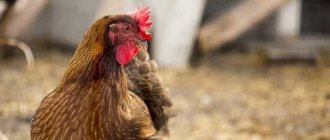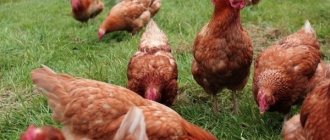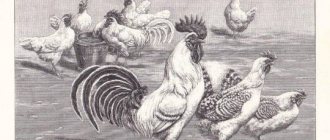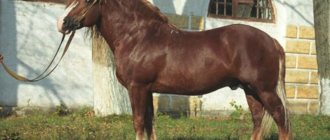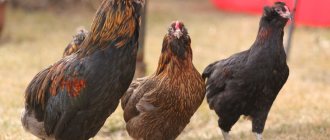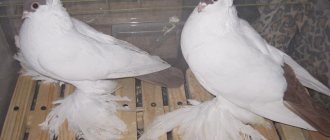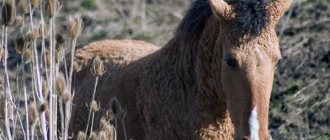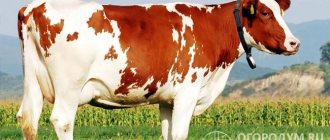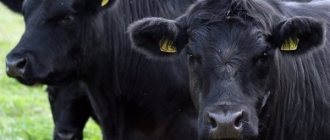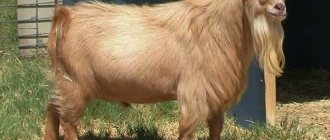Millefleur chickens: miniature birds with high egg production
Farmers who do not have the opportunity to build large and spacious chicken coops for fifty chickens should pay attention to dwarf varieties of poultry.
How to build a chicken coop at the dacha with your own hands: drawings, construction instructions (read more)
The advantage of miniature chickens is that they do not take up much space, and in a small room you can keep a large population, and in order to raise dwarf birds, you will need much less feed than when keeping their large counterparts. One such profitable variety is the Millefleur chicken .
History of the origin of the Millefleur breed
The homeland of this breed is Holland, where dwarf chickens began to be bred back in the Middle Ages. The first mention of miniature colorful birds dates back to the 16th century.
Millefleur chickens.
Birds attracted medieval farmers because they did not take up much space, and this was especially important when living in densely populated areas, where farmsteads were not spacious and were crowded together. In addition, laying hens were valued for their good egg production, since in these indicators they were not inferior to ordinary chickens, and the meat of Milleflers was distinguished by excellent taste.
Due to these advantages, the breed quickly became popular in European countries, and then appeared in Russia, where to this day it is considered one of the most popular among dwarf varieties.
On a note! The name “de mille fleures” is translated from French as “a thousand flowers”, which fully corresponds to the variety of colors of these individuals. In addition to their external beauty, the birds have a friendly and easy-going character, and do not show aggression towards their fellow birds or other birds.
Origin story
The history of the millefleur breed is unknown, as is what chickens were its prototypes. The first mention of the breed appeared in Holland in the 16th century.
Presumably the breed was bred by amateur breeders for aesthetic purposes for admirers of exotic animals. Another goal of selection is to develop a small breed of chickens that could be kept in small spaces. As a result of selection, a decorative dwarf bird with beautiful plumage and unusual, heavily feathered legs was obtained.
The uniqueness of the decorative millefleur breed lies in the variety of pigmentation of its feathers. There are several varieties of these chickens based on color: tricolor, black and white, speckled blue, white and porcelain.
Basic colors of Millefleurs with photos
Thanks to the efforts of breeders, a huge number of colors of chickens of this breed have appeared.
Conventionally, the variety of colors can be divided into three groups:
- Orange chickens. The plumage of these individuals is orange or light brown, and the feathers are decorated with symmetrical spots.
- Orange and black birds. In this group, the body is also orange-yellow or walnut in color, but the tail is black, and in chickens its tip is decorated with white or gray feathers.
- Blue Milfers. The plumage of these birds has a bluish tint, and on the back and neck it shimmers with gold.
Millefleur chickens (click on photo to enlarge).
Millefleur chickens (click on photo to enlarge).
Millefleur chickens (click on photo to enlarge).
Millefleur chickens (click on photo to enlarge).
Millefleur chickens (click on photo to enlarge).
Millefleur chickens (click on photo to enlarge).
These categories are considered basic, and each of them is divided into many subgroups.
Today you can find the following colors and combinations:
- Millefleur isabella;
- blue;
- calico;
- mottled;
- black and white;
- porcelain;
- blue speckled;
- black and white;
- yellow and lemon;
- "red porcelain";
- blue-striped;
- white;
- millefleur lavender and others.
Breeding work continues today, and it is likely that many new colors of these dwarf birds will appear in the near future.
Description and characteristics of Milfleur
Since there are so many color options for these dwarf chickens, it is not possible to recognize them by color.
However, Millefleur birds have a number of distinctive features:
- rounded compact body shape;
- feathers that fit tightly to the body;
- small head;
- a large, well-developed crest in cockerels, which seems a bit large for such a small bird;
- large earlobes;
- feathering on the legs.
Representatives of this breed amaze with their miniature size; they are really very small. The body weight of a rooster barely reaches 800 g, and that of a hen – 600-700 g.
Calm disposition and external beauty are the advantages of the millefleur bird.
Breeders note that birds of this breed have a peaceful and calm disposition, are hardy and unpretentious to the conditions of keeping laying hens, and are also able to take care of not only their own, but also other people’s offspring. Quite often, hens are used as “living incubators” and eggs of other birds, such as quails or pheasants, are placed on them to hatch.
Weight of hens and cockerels “A Thousand Flowers”
The De mille fleurs breed is distinguished by its small size birds. The adult leader of the family reaches a weight of around 800 grams, and laying mothers have a slightly lower figure - up to 700 grams.
The weight of one egg ranges from 27-30 grams, with quantitative statistics – 100-110 units per year.
Laying hens have retained their brooding instinct, which allows them to be “kindly invited” as brood hens for the eggs of other poultry. Cockerels are unique in their behavior - they are characterized by caring care for their hens and small offspring - tiny babies.
Productive qualities of the breed
Due to their low weight, the meat productivity of Millefleur chickens is very low, but the egg production indicators are quite acceptable. Over the course of a year, one hen can produce 110-140 eggs weighing 30-35 g.
Laying hens have a well-developed maternal instinct, and they conscientiously care for their offspring. Chickens of this breed have strong immunity, and the survival rate of young animals is 96-98%.
Note! Many farmers note that keeping Millefleur chickens is more profitable than ordinary poultry, since the profit margins significantly exceed the costs.
Millefleur birds are beneficial for backyard breeding.
Advantages and disadvantages
Millefleur chickens, like other poultry, have their pros and cons; they must be taken into account when breeding birds.
Advantages of Millefleur:
- decorative direction - birds will always decorate the area;
- a large number of colors;
- frost resistance and adaptation to living in cold areas;
- birds do not need a huge chicken coop;
- low maintenance requirements;
- excellent brooding instinct;
- strong immunity;
- expensive meat.
Disadvantages of the Millefleur breed:
- low meat productivity;
- low egg production;
- feathers on the paws require constant care;
- need quality nutrition.
In the video presented, watch an overview of the Millefleur chicken breed:
Necessary care and maintenance requirements
One of the main advantages of Millefleur chickens is that they are undemanding in terms of maintenance. This fact surprises many experienced breeders, since it is known that dwarf birds are often capricious and sickly.
Millefleur chickens can be walked in the garden.
But still, some features of keeping and caring for chickens of this breed exist.
In order for the livestock to feel comfortable, it will be necessary to provide them with living conditions in accordance with the following rules:
- Equip a warm, windproof winter chicken coop for 20 chickens, since chickens are sensitive to low temperatures. This is due to the fact that individuals have small body sizes and insufficient fat reserves, and therefore are not able to warm up on their own, even with such abundant plumage.
- Cover the floor of the chicken coop with a bedding of peat and sawdust. This will help remove excess moisture and also rid the birds’ place of residence from an unpleasant odor.
- Equip the room with high perches that could accommodate individuals.
DIY winter chicken coop: calculating the size of a chicken coop for 20 chickens (read more)
It is important to remember that these small birds, although they do not require much space to live, are best kept in high aviaries, since Millefleurs love to fly. This will save space and make the life of the chickens as comfortable as possible.
How to breed
Millefleur hens are excellent brood hens. That is why their breeding at home is most often carried out naturally. In this case, a person needs to ensure cleanliness in the chicken coop, as well as adequate nutrition for the chicken.
It is possible to breed chickens in incubator conditions. After the chickens hatch, it is necessary to maintain the optimal temperature in the incubator for 5 days. After this time, the chickens are taken outside if there are favorable weather conditions.
Also, young individuals of the breed need timely vaccination against chicken flu.
In this case, it is also recommended to introduce various mineral supplements into the diet, which will eliminate the possibility of developing various diseases.
In order to safely raise Millefleur chickens, it is recommended to adhere to hygienic rules for raising them. The poultry farmer must ensure the cleanliness of the drinking bowls. They should not have a slippery coating on the surface.
Photo of a Millefleur hen with chicks.
Feeding and required ration
Millefleurs are undemanding when it comes to nutrition and love green food. For this reason, the farmer should take care of a place for birds to walk in the summer. During the warm months, some breeders replace the birds' main diet with a mixture of feed, grain crops and finely chopped greens.
Millefleur chickens need to be fed high-quality feed.
In winter, chickens require more high-calorie nutrition, and for them you will need to prepare a mash from the following ingredients:
- chopped eggs;
- cottage cheese;
- special feed for broiler breeds.
Such food will be an excellent source of nutrients and microelements necessary for growth and development for birds.
Breeding
When equipping a poultry house, the farmer should take care of a place for hatching eggs and keeping young animals. It is noteworthy that not only hens, but also cockerels participate in raising and caring for chickens. Hens of this breed are distinguished by excellent maternal instinct, and males are ready to protect the chicks at any time.
A pair of millefleurs can produce more than thirty chicks in a year.
When keeping young animals, it is important to maintain the temperature regime; the house should be warm enough, from 28 to 30 degrees. For the first week, chickens are fed a mixture of cottage cheese and crushed eggs, and then gradually transferred to specialized feed, and also fed with corn and semolina.
Diseases and prevention
Representatives of this breed have strong immunity! But they can still be affected by certain diseases. Diseases arise due to improper maintenance and care, as well as when pests appear in the chicken coop.
To prevent mass disease of this poultry, what should you do? The chicken coop and chicken run areas should be kept clean. The litter in the poultry house should be changed as it becomes wet or dirty. Wash drinking bowls regularly and change water at least once a day. Once a year, farmers should paint the walls and perches with a lime solution.
Should chickens of this breed be kept in enclosures? Then you need to add ash (or carefully sifted ash) to the litter. Baths or other large containers with a sand-ash solution are usually installed in the chicken coop. For what? So that chickens can “bathe in it, thus getting rid of parasites and other harmful insects.
Paw care
Once every three months it is necessary to treat chickens' feet. To do this, it is best to use the following tools:
- Birch tar;
- overcooked unrefined sunflower oil.
To prevent the development of the disease, it is necessary to regularly examine these pets, paying attention to:
- Plumage (healthy individuals have shiny and smooth feathers);
- on limbs and coordination of movements. Healthy chickens stand firmly on their limbs, move around the territory quite confidently, without staggering;
- digestive tract. Healthy individuals have an excellent appetite, they consume a sufficient amount of fluid, and they have normal stools;
- and how birds breathe. Their breathing should be frequent and their beak should be closed. During breathing, no wheezing, groaning or other extraneous sounds should be heard.
If there is a suspicion that an individual is sick, it should be immediately isolated from the main herd until a veterinarian arrives. And treatment is carried out according to the doctor’s recommendations.
All chicken flocks should be vaccinated according to the established schedule.
If you follow all the rules for keeping and caring for Millefleur chickens, there will be no manifestations of diseases or parasite attacks in these individuals.
Tips from farmers
According to reviews from experienced farmers, keeping Milleflers does not cause much trouble for the breeder.
To raise healthy and viable livestock, and ensure comfort for the birds, you should follow a few simple rules:
- equip a warm chicken coop or keep birds in high enclosures;
- monitor the dryness of the floor and humidity in the room;
- provide the birds with a sufficient amount of green food and protein products.
With a competent approach and following the basic rules of keeping, breeding these miniature birds can bring high annual profits with low costs of feeding the livestock and develop into a profitable and profitable business.
Spanish chickens: main varieties, description and general characteristics (read more)
